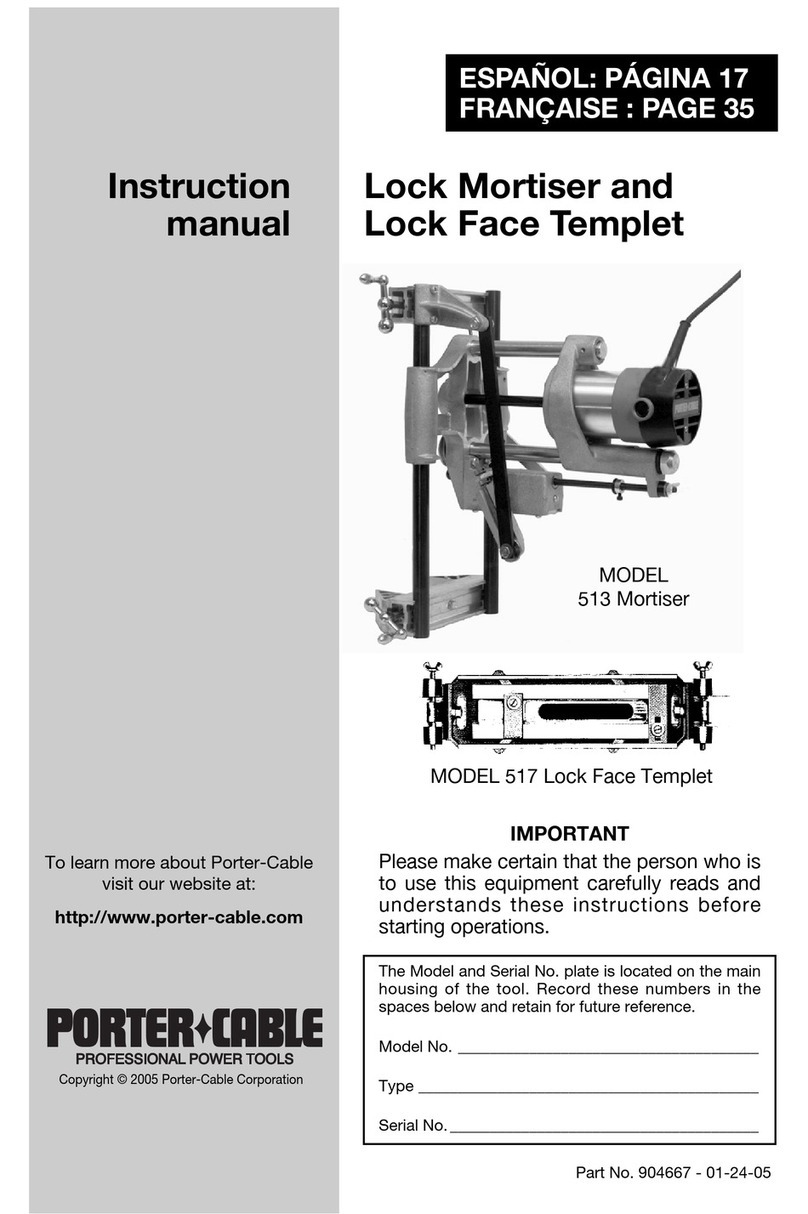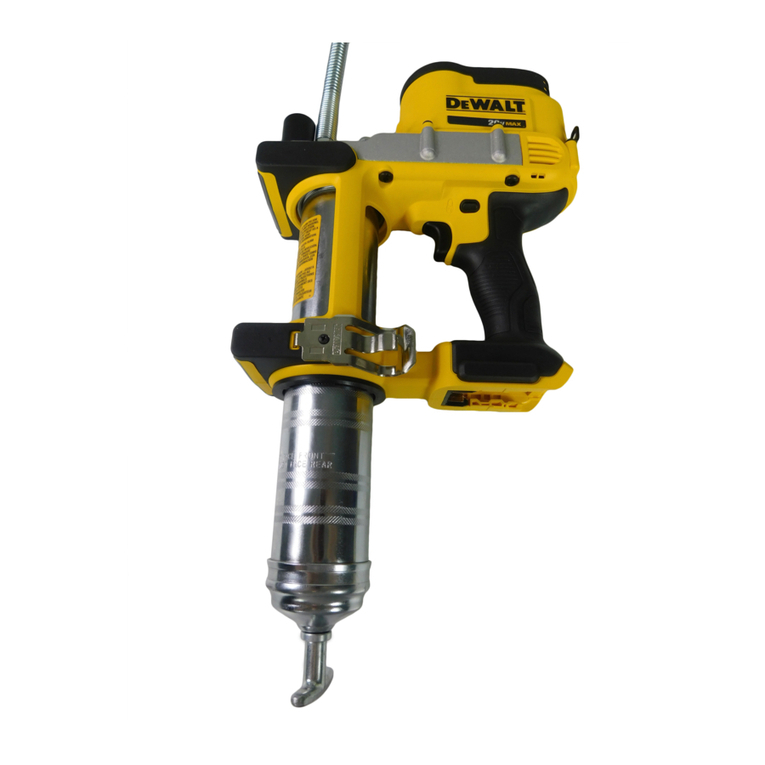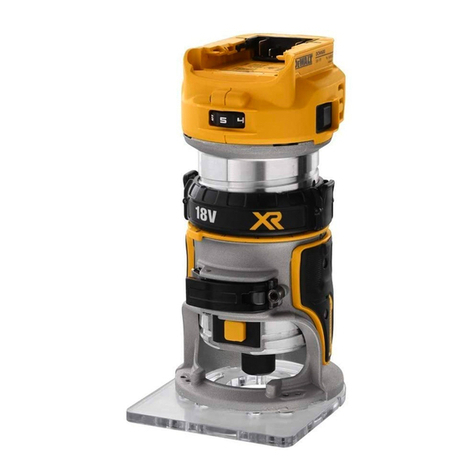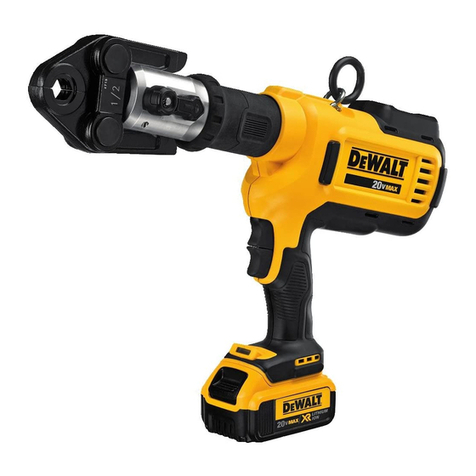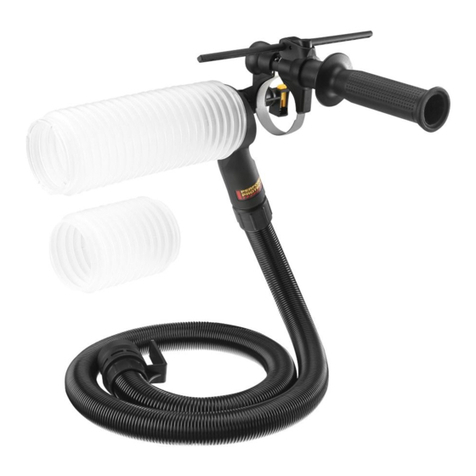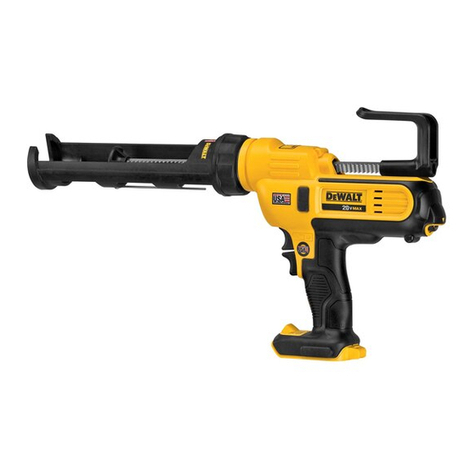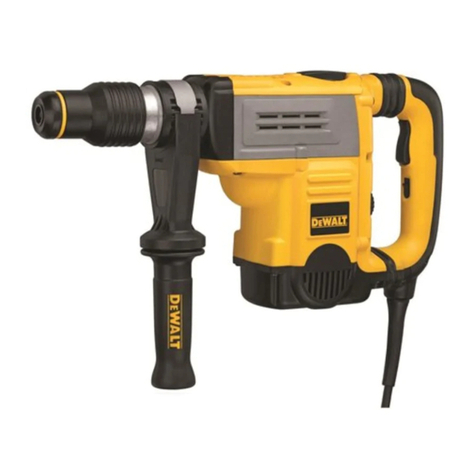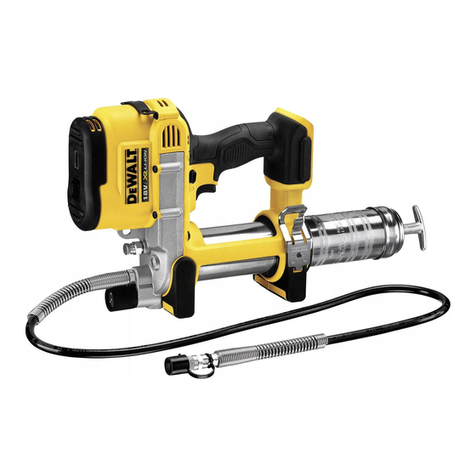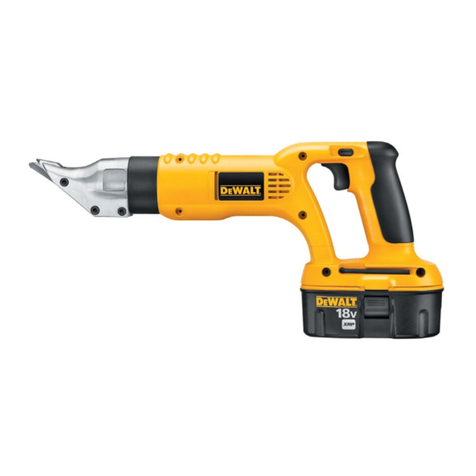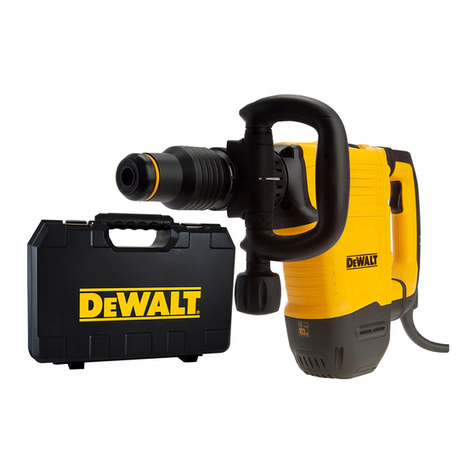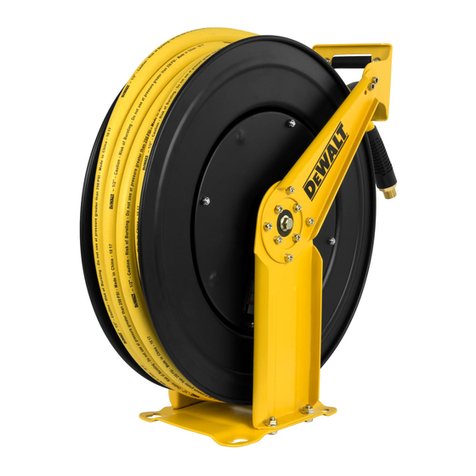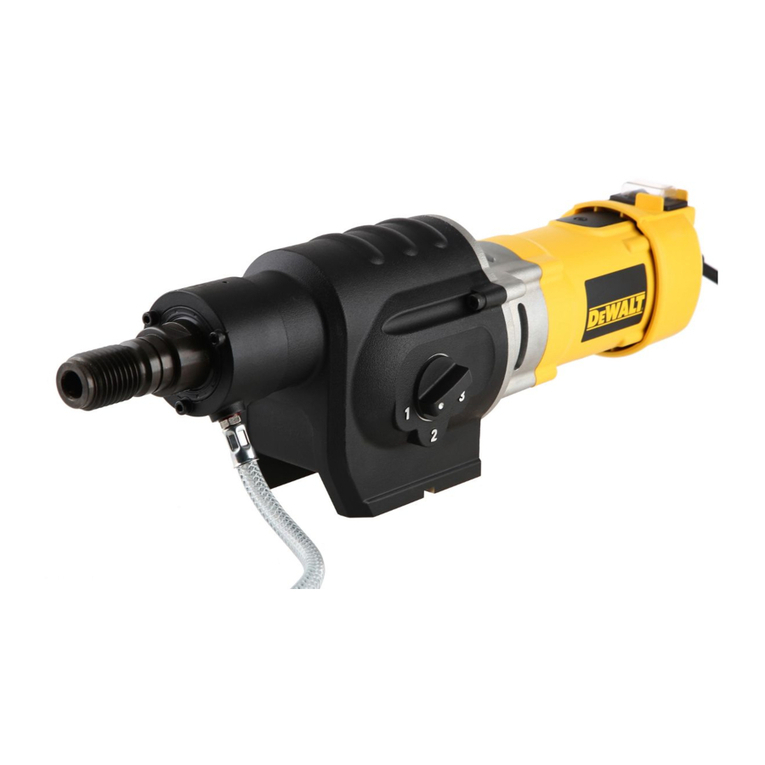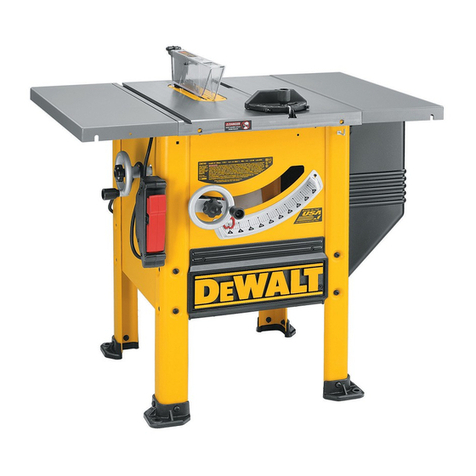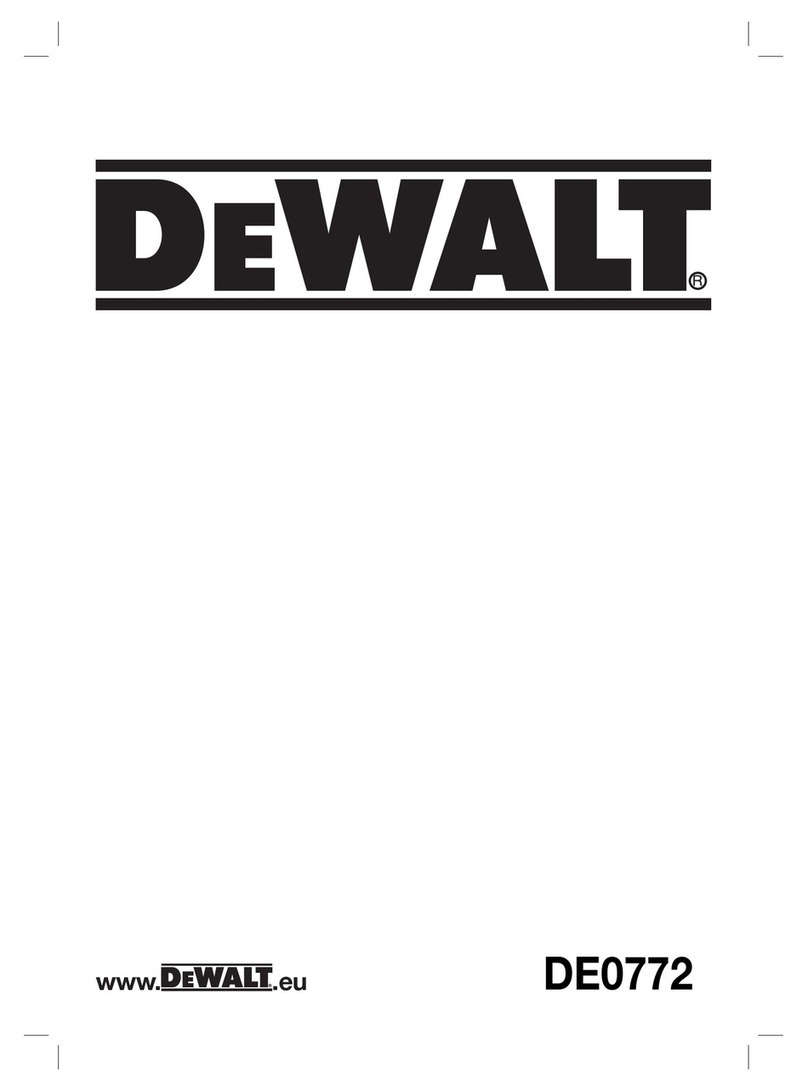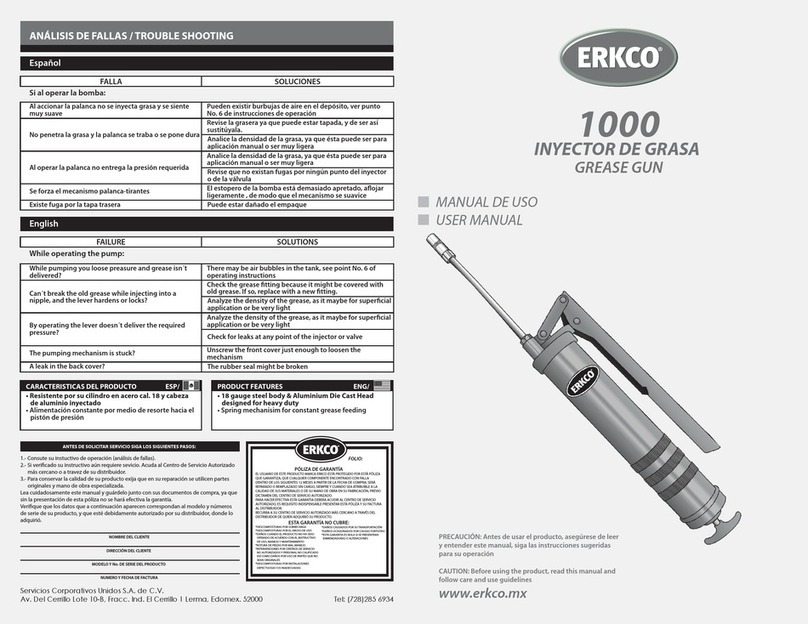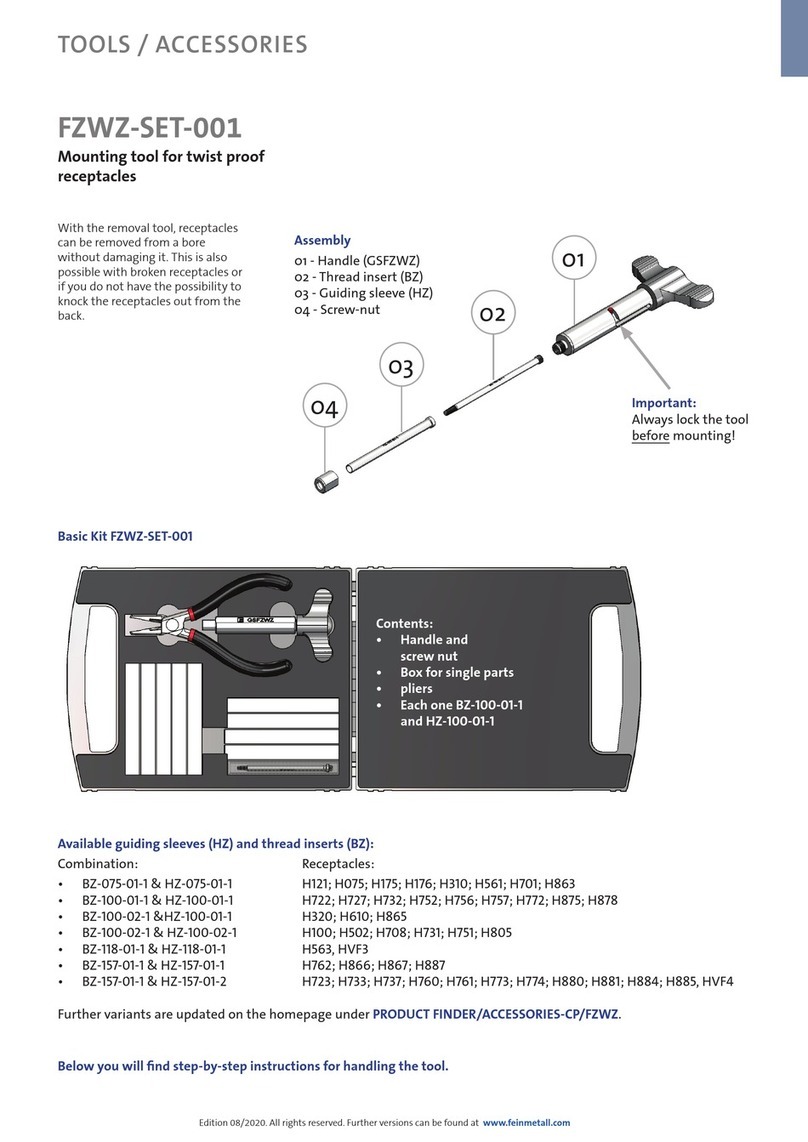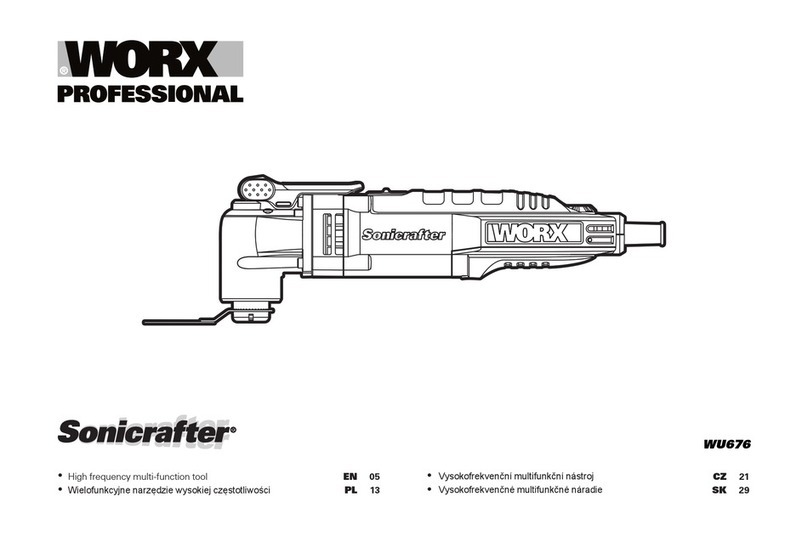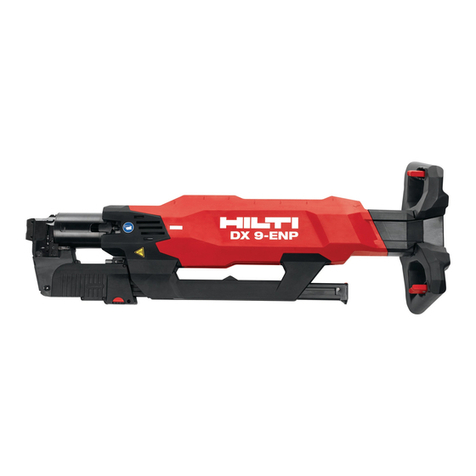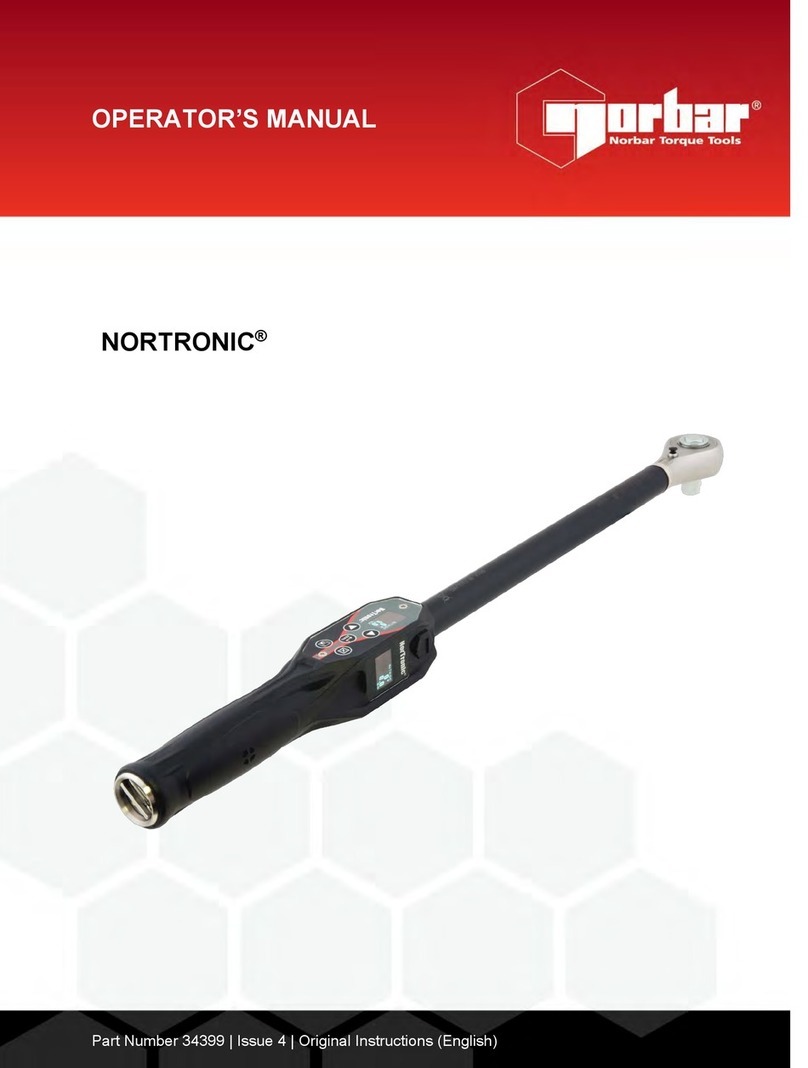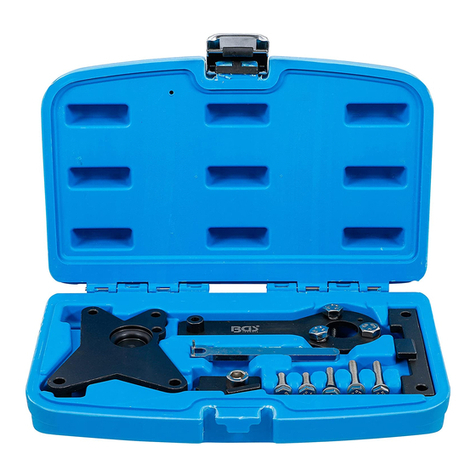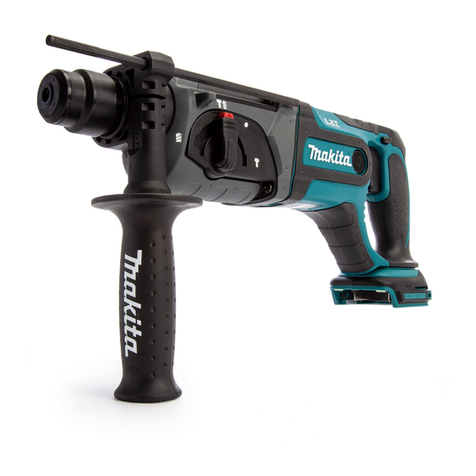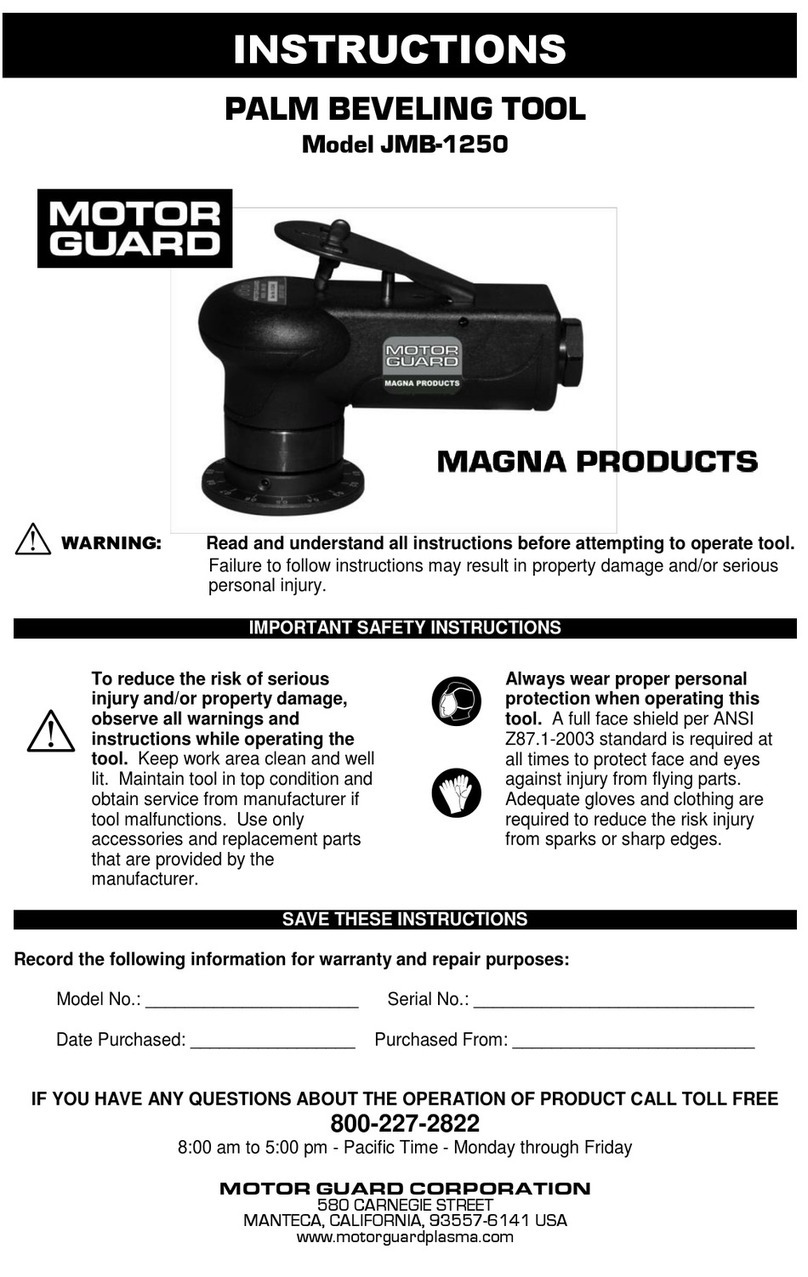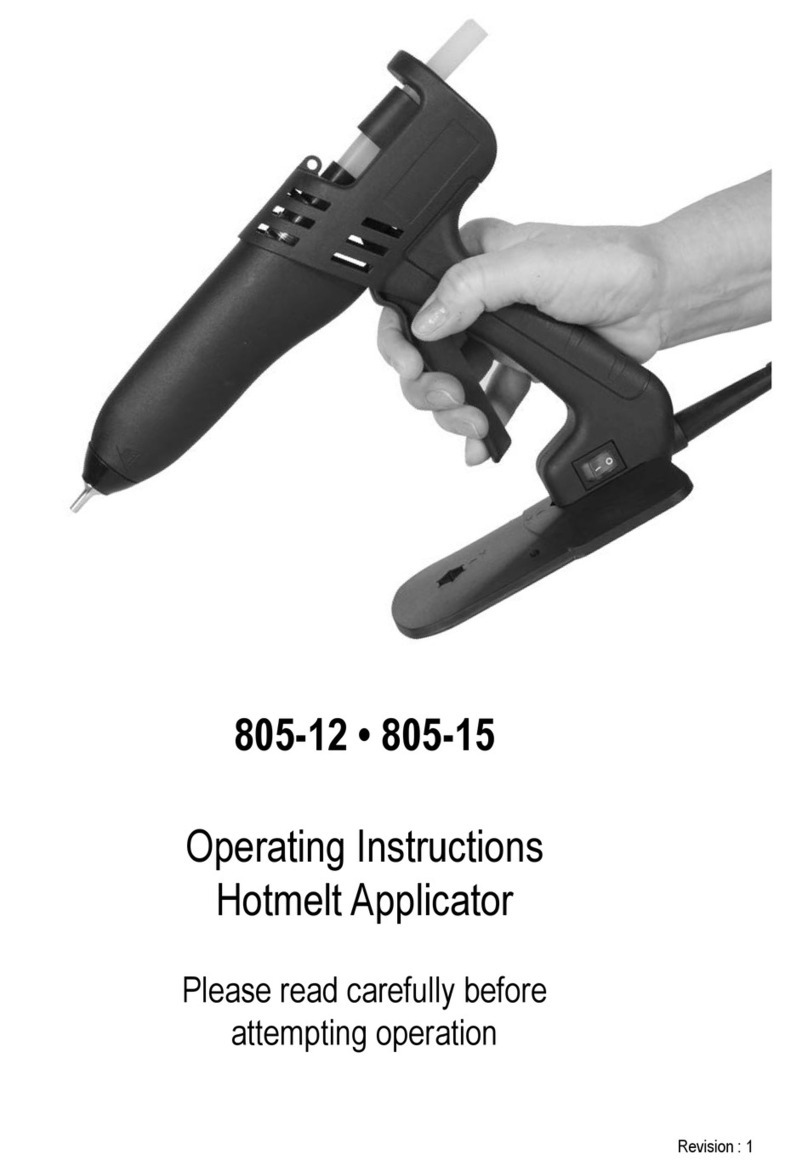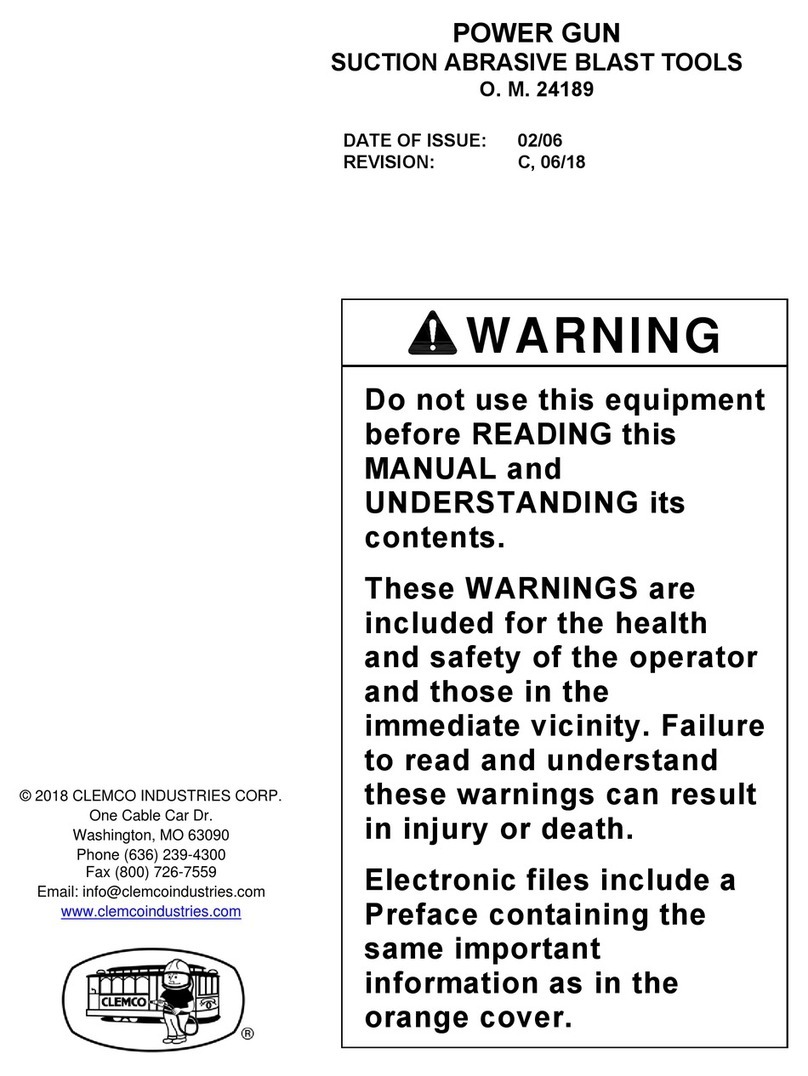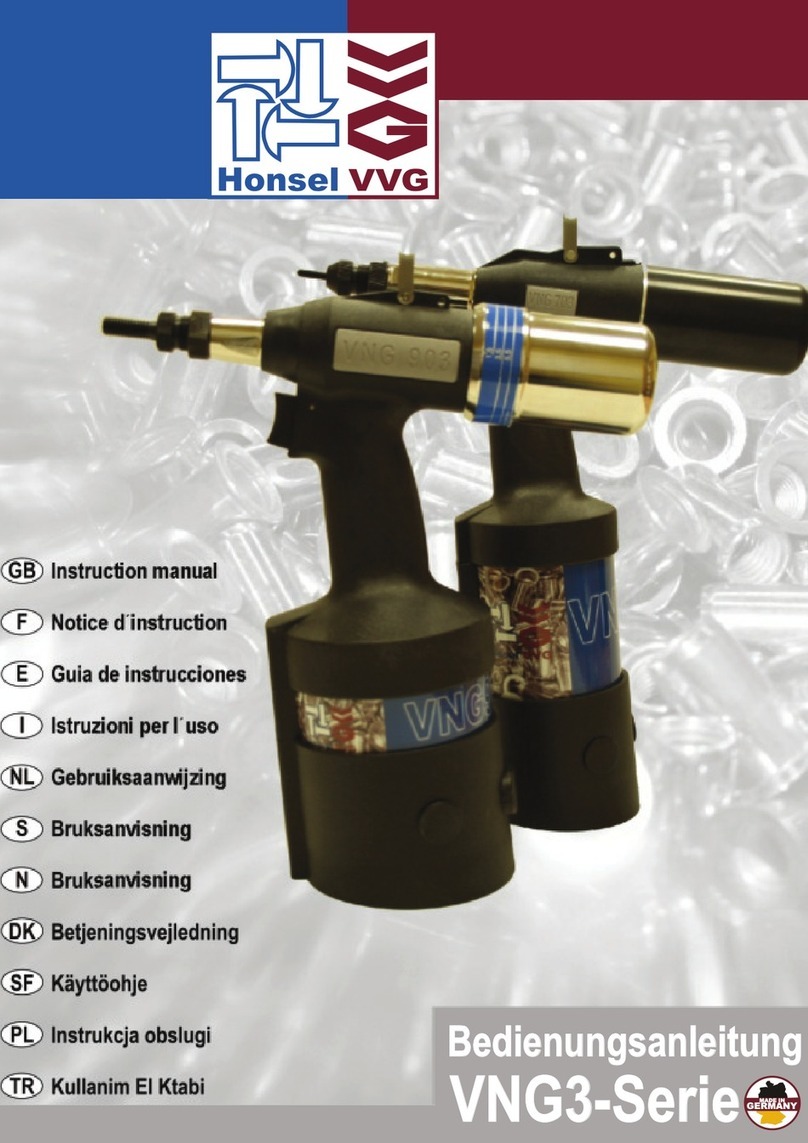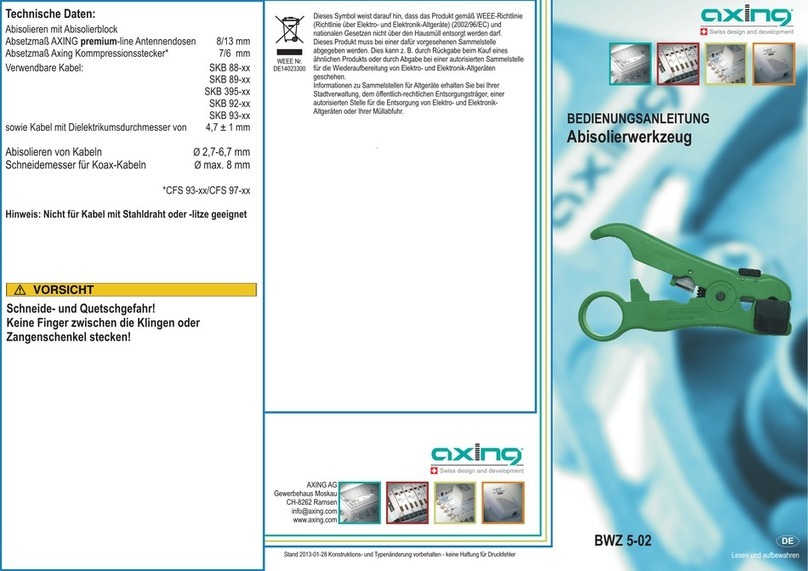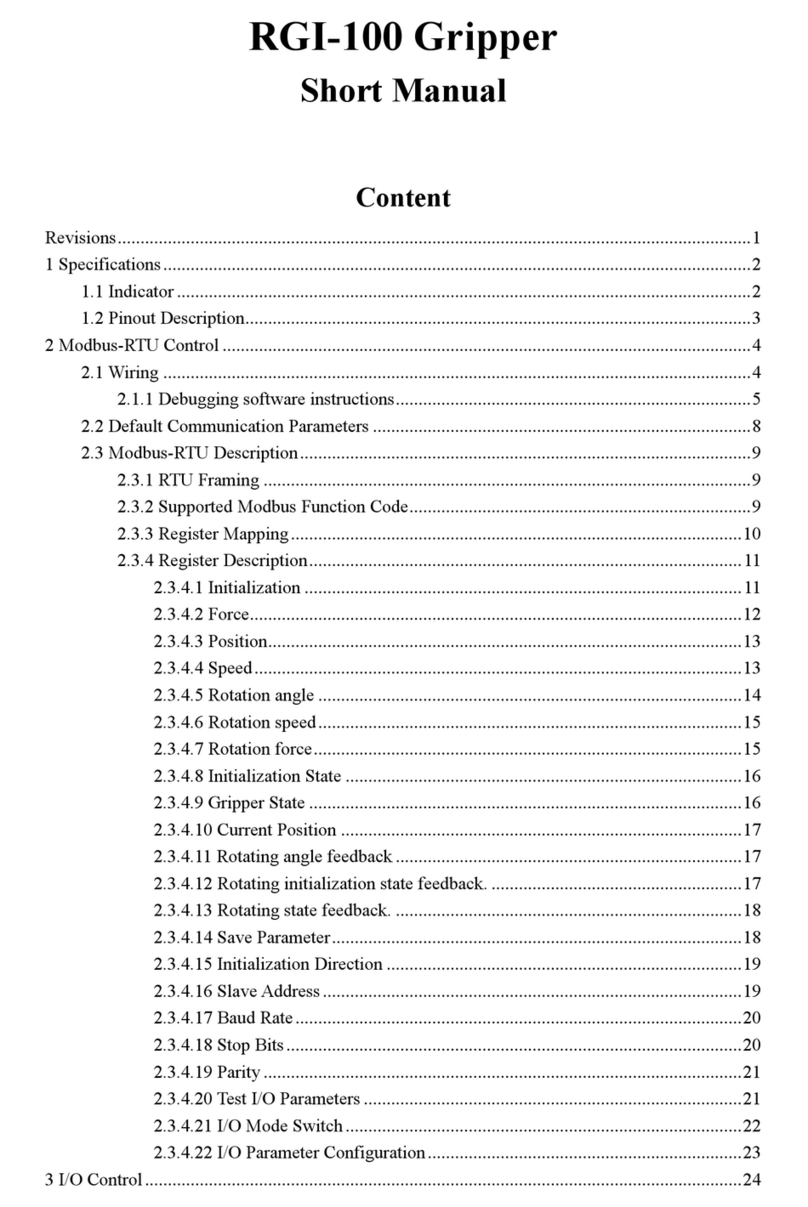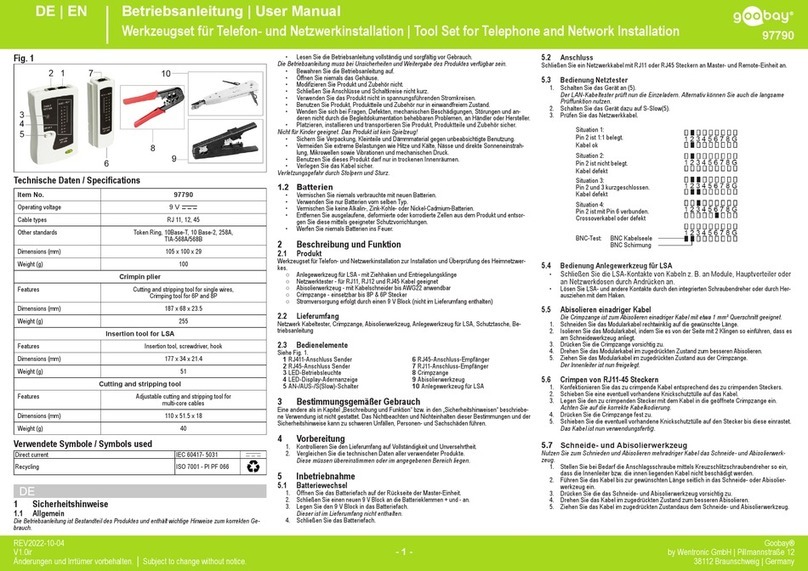
P2201
Model P2201 Cat. No. DDF211022P
6
impact the work surface possibly causing serious injury to
the operator or bystanders along with damage to the tool.
4. Do not load the tool until you are ready to make a
fastening. Check the power load level before inserting it into
the tool chamber.
5. Fastener must be loaded prior to loading the powder load,
to prevent injury to operator or bystander in the event of
an accidental discharge.
6. Do not close tool against work surface. The tool should be
manually closed, with hand away from muzzle/barrel to
prevent accidental discharge.
7. Hold the tool perpendicular to the work surface at all
times. Use a spall guard (part # 52166) wherever possible.
This will limit the possibility of fastener ricochet which
could cause serious injury or death to the operator or
bystanders. To order optional spall guard at no charge call
1-800-4-DEWALT.
8. Always perform a test fastening with the lightest load level
designed for use in the tool. If the lightest load fails to set
the fastener, try the next highest load until the proper level
is attained. Failure to follow this procedure may cause the
fastener to be overpowered. If this occurs, the fastener
may fully penetrate the base material causing serious
injury or death to someone. Overpowering the fastener can
also damage the tool, creating a safety hazard to both the
operator or bystanders.
9. Do not fasten into cast iron, tile, glass, or other types of
brittle materials. These materials can shatter and create
sharp fragments which may cause injury.
10.Do not fire tool within 3” (three inches) of the edge of a
concrete base material or within 1/2” (one-half inch) of
the edge of a steel base material.
11.Do not attempt to install a fastener closer than 3” (three
inches) to another previously inserted fastener in concrete
or 1-1/2” (one and one-half inch) in steel.
12.Do not fasten into a concrete base material less than 3
times as thick as the fastener penetration or into a steel
base material thinner than 1/8”.
13.Never attempt to install a fastener in a cracked or spalled
area in concrete. Place fastener at least 3” (three inches)
away from a spalled area to prevent the possibility of the
fastener bending and striking an operator or bystander.
14.Do not attempt to install fasteners in areas that have been
welded or cut with a torch as these procedures may have
caused local hardening of the steel.
15.Do not fasten through a pre-drilled hole unless proper
guidance is provided.
16.If you decide not to make a fastening after the tool has
been loaded, you must always remove the powder load first
followed by the fastener.
17.Never attempt to override the safety features of this tool.
18.Stay Alert, watch what you are doing, and use common
sense. Do not use tool when you are tired or under the
influence of drugs or alcohol.
19.Maintain proper footing and balance. Do not over reach.
20.Check that no one is present directly behind or below the
work surface.
Handling the Tool And Powder Loads
1. Never leave a loaded tool unattended. Once the tool is
loaded, make the fastening immediately or unload the tool.
2. Always unload the tool before work breaks, changing parts,
cleaning or servicing, and when storing.
3. To prevent accidental discharge of loads, never carry the
powder loads in the same container as the fasteners or
other hard objects.
4. Always store the powder loads in the containers provided
or in an enclosure provided for them. Never intermix the
various power levels. Keep them segregated in clearly
identified containers.
5.
Powder loads should never be used in firearms. They are normally
more powerful that the cartridges supplied with the firearms.
6.
Powder actuated tools and powder loads should always be stored
under lock and key. Tools must be unloaded when not in use.
Tool Malfunction
1. In the event that a load fails to discharge after the trigger
is pulled, the tool must be kept depressed against the
work surface for a minimum of 30 (thirty) seconds in case
of a delayed load discharge. Then carefully remove the
entire load strip. and dispose of it in a can of water or
other nonflammable liquid. Never attempt to force or pry a
load out of a tool chamber.
2. Never discard unfired powder loads into a trash container.
3. Do not attempt to unload or disassemble a jammed,
stuck or broken tool as improper handling may cause
it to discharge and strike operator and/or bystander. A
jammed tool must be pointed in a safe direction at all
times. Tag the tool and lock it up. Call your DEWALT
representative for proper assistance.
Tool Operation
Be sure to read and understand all of
the safety precautions and training in this manual before
attempting to operate the tool. (Check to be sure the tool is
not loaded, the piston moves freely within the barrel, and no
foreign objects or fasteners are in the barrel.) Perform the
daily function test before using the tool.
Operation
1. Always point the tool in a safe
direction away from bystanders
and the operator. Slide the barrel
forward. This can be done by
snapping your wrist. The barrel should be pulled fully
forward to reset the piston for the next fastening. Loss of
power may result from an improperly positioned piston.
2. Always load the fastener before inserting powder load to
prevent injury to the operator or bystanders in the event of
an accidental discharge. Place the fastener, point out, into
the end of the nose piece until the fluted tip fits inside.
Do not use excessive force when inserting the fastener. If
excessive force is required, stop and determine why the
fastener can not be inserted. Correct the problem before
proceeding.
Do not use fasteners longer than 3” as
listed in the fastener selection section of this manual.
3. Make sure the breech is clear. Insert
the powder load starting with the
lowest power level. If this Load does
not fully set the fastener, try the next
higher power level until the proper
level is found.
Over driving or over powering a fastener can
cause a safety hazard.
4. Pull the barrel all the way back to
close the tool. Do not attempt to
close the tool by exerting force on
the front of the nose piece. Never
place your fingers or hands over
muzzle bushing. The safe position for hands and fingers
POW2273_manual_P2201_dewalt.indd 6 3/10/14 12:41 PM
